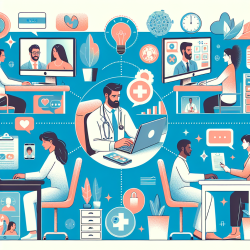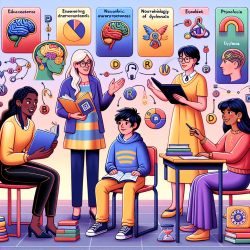The COVID-19 pandemic has significantly transformed the landscape of mental health services, pushing the field towards online platforms. As mental health professionals, it's crucial to stay updated with the latest research and best practices in tele-mental healthcare to provide the best outcomes for our clients. The research article "Tele-mental Healthcare as the 'New Normal': Revisiting the Nuances" offers valuable insights into this evolving field. This blog will highlight key findings from the article and provide actionable steps for practitioners to enhance their tele-mental healthcare skills.
Key Findings from the Research
The study conducted by Sinha et al. (2022) delves into the effectiveness and challenges of tele-mental healthcare. Here are some of the critical takeaways:
- Effectiveness: The research indicates that online therapy can be as effective as in-person therapy for various mental health conditions. Both clients and providers generally view telehealth favorably.
- Accessibility: Online therapy and tele-consultation make mental health services more approachable and convenient, especially for clients who have difficulty accessing in-person services.
- Flexibility and Convenience: Tele-mental healthcare offers flexibility in scheduling, saves time on commuting, and enhances client vulnerability and disclosure.
- Challenges: Despite its strengths, tele-mental healthcare faces challenges, particularly concerning privacy and confidentiality in the digital space.
Actionable Steps for Practitioners
Based on the findings, here are some steps practitioners can take to improve their tele-mental healthcare services:
- Invest in Secure Technology: Ensure that the platforms and tools you use comply with privacy and confidentiality standards. This will help in maintaining the trust and safety of your clients.
- Enhance Digital Literacy: Stay updated with the latest technological advancements and digital tools that can enhance the therapeutic experience. This includes learning about new software, apps, and platforms that can aid in therapy.
- Continue Professional Development: Engage in continuous learning through webinars, workshops, and courses focused on tele-mental healthcare. This will help you stay abreast of the latest research and best practices.
- Establish Clear Boundaries: Set clear boundaries with clients regarding session times, communication methods, and emergency protocols. This helps in maintaining a professional and effective therapeutic relationship.
- Focus on Client Engagement: Develop strategies to keep clients engaged during online sessions. This can include interactive activities, visual aids, and regular feedback sessions.
Encouraging Further Research
While the current research provides a solid foundation, it's essential to continue exploring the nuances of tele-mental healthcare. Practitioners are encouraged to conduct their own research or collaborate with academic institutions to study the long-term effects and potential improvements in this field. Areas that require further investigation include:
- The impact of tele-mental healthcare on different age groups and demographics.
- Strategies to overcome the digital divide and ensure equitable access to online therapy.
- Long-term outcomes of tele-mental healthcare compared to traditional in-person therapy.
- Ethical considerations and guidelines specific to tele-mental healthcare.
Conclusion
Tele-mental healthcare is here to stay, and as practitioners, we must adapt to this new normal. By implementing the research findings and continuing to explore this field, we can ensure that we provide the best possible care for our clients. To read the original research paper, please follow this link: Tele-mental Healthcare as the “New Normal”: Revisiting the Nuances.










